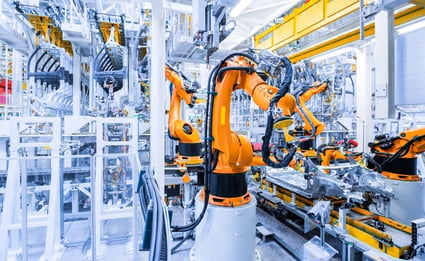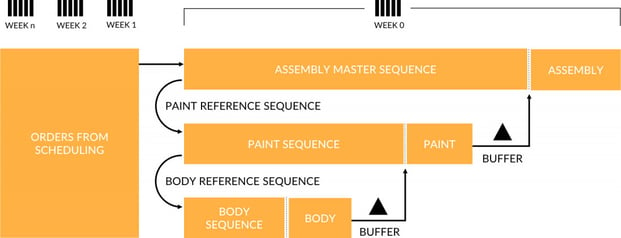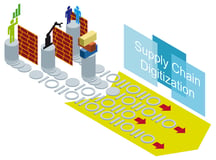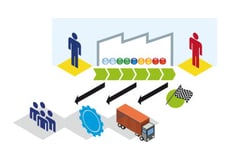The Significance of Order Sequencing in Discrete Manufacturing
Ute Strohmaier - January 16, 2024

Discrete manufacturing is characterized by the production of goods composed of numerous individual parts, sometimes reaching tens of thousands in quantity (such as automobiles, agricultural special vehicles, trucks, forklifts, etc.). This necessitates an assembly process typically carried out in multiple phases and at different workstations. For instance, a truck comprises numerous components – produced separately, also thousands of supplier parts, and finally brought together in a final assembly line.
To manage the often highly complex manufacturing process, discrete manufacturing relies on bills of materials (BOMs) listing all individual parts comprising the product. Sometimes, BOMs even include fasteners like bolts or mounting brackets. The components and sub-assemblies making up the end product often need assembly themselves beforehand. In these cases, multi-level BOMs (and, if the product is configurable, matrix BOMs) are employed to keep complexity under control. A robust MRP/ERP system is indispensable for this type of manufacturing process.
The production of units in discrete manufacturing usually occurs at various workstations, which can operate independently or sequentially. This makes tracking the routing of production activities another crucial attribute of discrete manufacturing. In a truck example, it might be possible to produce axles, cabs, engines separately, but their integration into the truck would require sequential routing. It can also happen that products are produced in different facilities, for example, a part in Asia and the final assembly in Europe. In this case, planning needs to be done across different locations to ensure timely availability of necessary resources.
Manufacturers in discrete manufacturing are more inclined towards make-to-order principles compared to process manufacturing, which favors make-to-stock. Discrete manufacturing is often associated with vertical markets, such as machinery – household appliances, machine tools, agricultural vehicles and machines, automotive, and commercial vehicles.
These are all variant-rich products subject to different production orders and constraints. In production planning, forming a manufacturing order sequence is crucial to create efficient and smooth production sequences. Production doesn't happen directly upon receiving an order; instead, through software, mid-term (monthly, through order slotting) and short-term (weekly/daily, through sequencing) "order buckets" are formed, where the necessary resources for assembly or processes like painting are optimally scheduled. That is, a production sequence is designed to evenly distribute machine and personnel utilization, minimizing machine setup costs.

Examples of this type of manufacturing and its optimized planning through order slotting, order sequencing, or detailed scheduling can be found here.
In the realm of discrete manufacturing, detailed scheduling emerges as a pivotal element in optimizing production efficiency. Detailed scheduling takes the order sequencing process to a granular level, considering specific constraints, machine capabilities, and resource availability. This fine-tuned approach allows manufacturers to meticulously plan and allocate resources for each operation within a production sequence. By considering factors like processing times, machine capacities, and personnel availability, detailed scheduling ensures that the manufacturing process operates with precision. This level of planning becomes particularly crucial when dealing with intricate products that demand precise coordination of various components and assembly stages. Through detailed scheduling, manufacturers can achieve not only an optimal allocation of resources but also minimize downtime, enhance throughput, and adhere to strict delivery schedules. It serves as a key component in the arsenal of tools that discrete manufacturers employ to maintain agility and efficiency in their production processes.
If you want to learn more, download your guide to Transformation of Manufacturing Processes.
In this Guide you will learn:
-
Emerging Challenges in the Modern Truck/Automotive Industry
-
How Can Global Companies Adapt to These New Realities
-
How Decentralized Digital Systems Power Smarter Planning Processes
-
How flexis Can Support Flexible Supply Chain Transformation
LATEST POSTS
- Understand Circular Economy in The Manufacturing Industry
- How Can Industry 4.0 IT Integration Be Achieved Smoothly?
- The Significance of Order Sequencing in Discrete Manufacturing
- How to improve your Supply Chain Management: The Power of Control Towers
- Optimizing Human Resource Scheduling in Manufacturing: A Technological Approach



